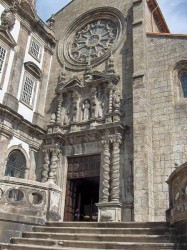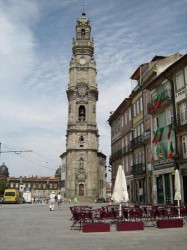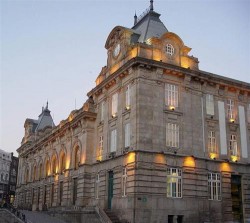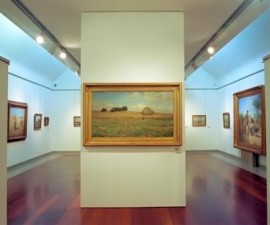With much of Porto contained within UNESCO’s World Heritage Site designation, there is plenty to see in this great city to keep visitors occupied for as long as they are here.
Simply wandering through the myriad of winding streets of the old town is a feast for the senses and a wonderful way to experience this ancient city’s history and grandeur. However, to get the best out of your trip to Porto it is worth making sure you take in a few of the city’s leading historic attractions while you are here.
Begin your sightseeing tour at the Church of Sao Francisco, the city’s most important Gothic cathedral and one of the most important of its kind in the whole of Portugal. There has been a place of worship on the site since 1244, when the Franciscan Order built a convent and a small church here, and this was later extended, in 1383, to incorporate the current cathedral in the fine Gothic style of the time.
Today the convent is long gone, but the Church of Sao Francisco lives on, having evolved and been suitably embellished throughout the centuries. Perhaps the biggest change the building has undergone was during the 18th century, when many of the interior surfaces were covered with intricate wood carvings and, in turn, covered with over 200 kilogrammes of gold leaf, or ‘talha dourada’, creating one of the most opulent and distinctive examples of baroque decoration in the country.
Don’t miss the exquisitely decorated chapels, which are nestled throughout the cathedral, and the catacombs, located below the church, which contain a fascinating museum with artefacts from the former monastery on show (including various human bones!).
If several hundred kilos of gold leaf are not enough for you, head to the Church of Santa Clara for another fix of opulence. The Church of Santa Clara dates back to the early 1400s, when it, too, was created alongside a convent. Smaller than its baroque rival, the Church of Santa Clara is no less sophisticated for its impressive architecture and refined wood and gilded finishes.
The Church of Santa Clara was built in Gothic Manueline style, with its baroque embellishments added later. This created an interesting combination of austere and rather unassuming exterior, which opens up to a breathtaking interior of gleaming gold opulence.
Other ecclesiastical attractions in Porto include the Se Cathedral and the Clerigos Tower. The Se Cathedral was built in the 12th century and is one of Porto’s oldest monuments, as well as one of the most important Romanesque buildings in Portugal. Flanked by two distinctive square towers, each supported by buttresses and crowned with a cupola, the cathedral makes an impressive centrepiece to the city’s UNESCO World Heritage preservation area.
The Clerigos Tower also lies close by and is well worth a visit both for its historical importance and for the stunning views it affords over the rooftops and spires of modern-day Porto.
Porto’s rich and prosperous past is evidenced in its many grand public and private buildings, such as the Palacio da Bolsa. The Palacio da Bolsa is a fine example of 19th-century architecture, commissioned from one of Portugal’s leading architects of the time, Joaquim da Costa Lima Junior.
It was built for the city’s Commercial Association and showcases lavish design, artworks and furnishing in its grand Tribunal Room, Assembly Room and Golden Room. The crowning glory is the Arab Room. Designed to impress, it certainly does to this day.
For a taste of everyday life for the bourgeoisie and aristocracy in 19th-century Portugal, the Romantic Museum of Quinta da Macieirinha is well worth a visit. This renovated mansion, which once provided refuge to King Carlo Alberto of Savoy and Piedmont-Sardinia after his defeat by the Austrian Empire, is a delightful example of Porto’s wealth and international importance at that time. The royal chambers of the Romantic Museum of Quinta da Macieirinha are stunningly adorned in rich furnishings and artworks fit for a museum.
Thankfully, opulence in Porto was not just reserved for private residences, for even the city’s Sao Bento Train Station was blessed with beautiful ceramic tile decoration in traditional Portuguese style. The Sao Bento Train Station was inaugurated in 1916, adorned with more than 20.000 blue-and-white azulejos, or tiles, depicting important scenes from everyday life and history. Visiting outside rush hour is advisable in order to allow plenty of space and time to soak up the atmosphere.





